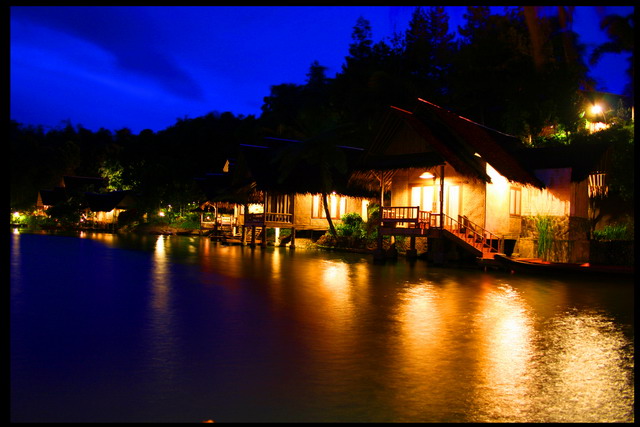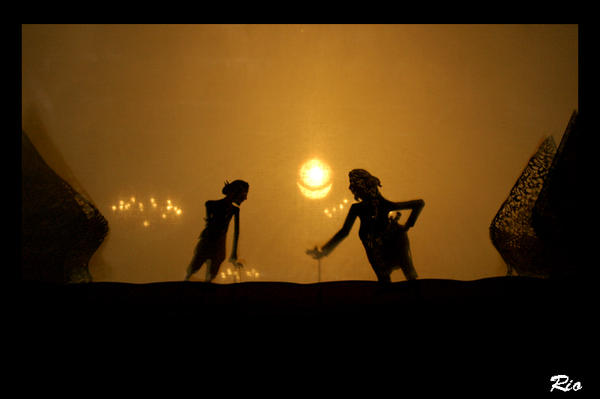
Wayang kulit is performed the whole night commencing at about 09.00 PM to 05.00 AM. It needs around eight hours to perform a plot of stories from Ramayana or Mahabrata epoch.
From Ramayana, for instance could be performed the story (lakon) of Anoman Duta for the whole night. Duta means envoy, ambassador. This plot tells the episode when Anoman was assigned by Rama to visit Alengka Kingdom to negotiate with Rahwana to release Sinta peacefully.
The performance could start with the birth of Anoman, his experiences while he was young showing how he learned his knowledge, got supernatural power, etc, until he met Rama and entrusted to act as his envoy to Alengka.
In Alengka he tried to accomplish his job in the best possible manner, but jailed due to rejection of Rahwana. He escaped from death penalty by burning the city. He could see Sinta in her custody, found out that she was safe and still loyal to her husband. Anoman finally could left Alengka and reported result of his mission to Rama. The performance of this story should end at 05.00 o'clock in the morning just before the sunrise.
Other plot (lakon) Rama Tambak (tambak means dam). It tells the story when Rama with the help of the monkey king Sugriwa and his soldiers were making a bridge across the sea to access to Alengka.
From Mahabharata there are several plots could be performed for example, Gatotkaca Winisuda (winisuda from the word wisuda means to graduate or graduation ceremony), tells the story when Gatotkaca was assigned as Senopati (Chief Warrior) of Pandawa in Bharatayuda. It could start with his days as youngster, showing his supernatural power and knowledge since his infant, his unreserved love to Pandawa, his marriage until his appointment as Senopati in Bharatayuda.
Other plot showing more religious aspect is for example, the story of Bima Suci (suci : holy), telling how Bima overcome a lot of obstacles when he searched the holy water of life. Until finally he met with Dewa Ruci, a very small god by build who told Bima the secret of life.
It is important to select the plot of story before performance, usually in accordance with the aim of a ceremony. For instance, someone is assigned to be a new rector of a university, to celebrate this occasion the university is performing wayang kulit. The plot of story considered as relevant is Lahire Wisanggeni (the birth of Wisanggeni). Wisanggeni is one of the Arjuna's sons, he has a very strong natural power and clever since his birth. Above all, he is honest, he would tell the truth to everybody and he is very obedient to Pandawa and Dewa.
Upon their instruction, he would carry it, even if he has to lose his life.
DALANG (The Puppet Master or The Story Teller)
After deciding the title of wayang story, a dalang (puppet master), a dalang to perform the show must be appointed. Dalang position is very important, as he is the leader of the performance. Sometimes dalang could be chosen first, afterwards a consultation with him could be held to choose an appropriate title.
Dalang comes from the words juru udalan (juru : an expert, a skillful man - udalan abbreviated to dalan, then becomes dalang means to tell stories), so dalang is a story teller.
Dalang is an overall artist. He must have a broad knowledge of several disciplines of arts, such as :
| 1. | Mastering deeply the stories of wayang Ramayana as well as Mahabharata, knows the characters of wayang figures. |
| 2. | Having a thorough knowledge of Javanese philosophy and moral ethics, as Javanese philosophy and moral ethics are inter-connected, or might be almost similar. |
| 3. | Having an accurate information in many aspects of life in the country (or even internationally in this era of information and globalization). |
| 4. | Having a good and clear voice, as he has to imitate about 50 (fifty) wayang figures with different voices. He has to explain every occasion, which has or should happened. And he has also to perfectly master the language 'high' and 'ordinary' used in dialogue, song and narration. He has to be a good singer, as he has to sing a lot during a performance. |
| 5. | Having the ability of preparing the scenario, so that plot of stories should flow smoothly, in accordance with standard patterns. |
| 6. | He has to know gamelan (Javanese musical instruments) used to accompany the show. He has also the capacity of a conductor as he should command the gamelan music; when it should begin and stop, and he should ask the gamelan crew what kind of music or song to be played. |
| 7. | He has to lead the chorus of pesinden (women singers), usually consists of three to five singers and wira swara (male singers). |
| 8. | He has to be skillful to move the puppets attractively. |
| 9. | He has to know how to make good jokes, at the sametime advising the audience unnoticeably. |
This part of play occurred at midnight at the Goro-goro episode, which last about one hour. During that time the Ponokawan appears. At most occasion the dalang plays a role as mouthpiece of the sponsors. In a performance organized by Agency of Family Planning, he should arise the topics of Family Planning. In front of the arm forces or police forces, he should speak of leadership and discipline. Before an audience in university he should speak of knowledge, good conduct and the goals of life.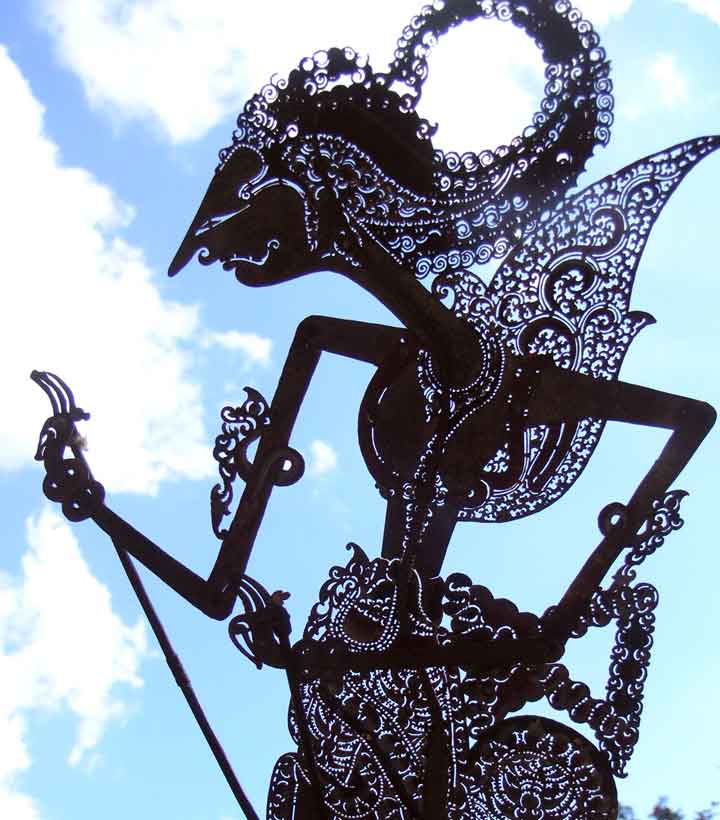
In the village, he should speak about the spirit of cooperation, development and any topics, which should give optimism to the villagers. The topics might be different, but here are similarities; he should tell it jokingly, interrupted by many songs, sung by the pesinden - women singers, accompanied by gamelan music. He should insert some advises on morality, hard working and every deed must be conducted properly not hurting other's feeling, not breaking the laws, especially the highest law such as the law of God.
Generally the Goro-goro time is full of laughters and musics, which make the audience happy and entertained.
Last but not least a dalang must be a healthy man or woman (nowadays, there are some women dalang), with a good physical endurance because dalang has to sit cross legged for eight hours on a mat to perform wayang.
The STAGE
It is needed to accommodate the performance, sometimes it is an elevated stage around 0,5 to 1 meter higher than audience's chairs.
On stage there is a white cotton screen illuminated by blencong (an oil lamp, hangs above the dalang), nowadays, a spotlight is used. From behind the scene, some audience watch the performance. They see the shadow of the puppets. Shadow in Javanese is wayang, from here the words of wayang kulit come. The mass of the audience sits in front of the screen to watch the wayang played by dalang.
On the right and left side of dalang, the wayang figures were arranged stuck to a banana tree poles. And at the left and right ends of the screen, banquets of bananas and leaves tree are decorated. Behind dalang the gamelan music instruments are arranged and played by the wiyogo (gamelan players).
The chorus of some pesinden (woman singers) as well as male singers are sitting there too. Next to the left side of dalang, there is a wooden box used by dalang to beat his instruments. The 'keprak', several pieces of small size iron plates hit by dalang by using right foot. From time to time, dalang during narration hit the wooden box with his hand by a 'cempolo' (wooden mallet).
The SHOW
The gunungan (from gunung : mountain) or kekayon, a mountain like leather puppet has an important part in wayang performance. Symbolizing the power of life of the creator, gunungan is used to begin the play, change one scene to other or imagine wind, obstacles, mountain, clouds or seas.
Before commencing wayang performance, a set of traditional offerings have been prepared with incense burning, a prayer to God Almighty is said in the hope the wayang performance should be conducted safely and the message should be accepted by the audience.
The pattern of wayang show begins with court audience, followed by a battle between a ksatria and giants (buto) lead by Buto Cakil. The ksatria wins the battle by killing Buto Cakil, it's symbolizing that every good efforts should end successfully after eliminating the obstacles.
Then, the appearance of the famous Ponokawan, which is very comical and full of laughter, songs and music. Nowadays, some guest stars such as local famous singers and jokers might take part in the interlude made the show livelier.
Followed by some meeting and decisive battles until morning. At the end a wooden puppet (in javanese Golek) is played by dalang. The word golek means to search, in that case the audience is requested to search, the meaning of the story which has been performed the whole night. Gunungan is stuck in the middle of the screen.
Lessons from Wayang Kulit Performance
| 1. | On the top, it's a lesson of morality, honesty, truth should win against evil. |
| 2. | One has to choose what to do in accordance with his own belief. - Kumbakarna has to choose to fight despite Rahwana's sinful deeds, not to defend his brother but to defend his country. "Right or wrong is my country".
- Wibisana, he chooses to defend the absolute truth. A sin committed by his own brother - the king, must be condemned. He decides to join Rama, the right side.
|
| 3. | It is reflecting events in life. - One must work hard decently before attaining his goals.
- Lust of material wealth should bring disaster to other people and at the end should ruin his own life.
- Love affaires exist since ancient time. But do not follow the wrong examples, such as the one between Begawan Wisrawa and Sukesi, Rahwana's parents.
|
| 4. | Life Purification.
A king gives up his own crown, goes to solitude and lives as a Begawan to meditate, purifying his soul to reach a true holiness. |
| 5. | Everyone is longing to live in a just (adil) and prosperous (makmur) society, in the safe, peaceful and secured situation with the blessing of God Almighty. |
 Indonesian through Bali has been selected as “The Best Destination Spa in the World.” by InternationalBourse Berlin, Jerman and gets International Wellness Awards.
Indonesian through Bali has been selected as “The Best Destination Spa in the World.” by InternationalBourse Berlin, Jerman and gets International Wellness Awards. Most of Bali spa centres offer 100% natural material. The basic ingredient of Spa original massage oils are imported from France. Bali spas have well-trained therapist. You will enjoy a fragrance while you are staying at spa treatment room. Some of Bali spa centres also have service of hair treatment, herbal milk bath, volcanic mud body treatment, lavender body treatment, and many other high quality services. Sometimes Bali Spas also give a free transport for a visitor from Nusa Dua, Jimbaran, Kuta and Sanur beach area.
Most of Bali spa centres offer 100% natural material. The basic ingredient of Spa original massage oils are imported from France. Bali spas have well-trained therapist. You will enjoy a fragrance while you are staying at spa treatment room. Some of Bali spa centres also have service of hair treatment, herbal milk bath, volcanic mud body treatment, lavender body treatment, and many other high quality services. Sometimes Bali Spas also give a free transport for a visitor from Nusa Dua, Jimbaran, Kuta and Sanur beach area.  giving nutrients and mineral back to your skin, end by relaxing into warm aromatic flower bath. For other choice, you may choose Aroma Therapy Massage, Balinese Traditional Massage, Swedish Massage or other kind of massage. Improve your blood circulation, reduces tension and stress, relieve muscles, rejuvenate tired muscles and relax your mind. The prices are relative cheap, around US$ 68-78 per package. So lets enjoyed your vacation on Bali Paradise.
giving nutrients and mineral back to your skin, end by relaxing into warm aromatic flower bath. For other choice, you may choose Aroma Therapy Massage, Balinese Traditional Massage, Swedish Massage or other kind of massage. Improve your blood circulation, reduces tension and stress, relieve muscles, rejuvenate tired muscles and relax your mind. The prices are relative cheap, around US$ 68-78 per package. So lets enjoyed your vacation on Bali Paradise.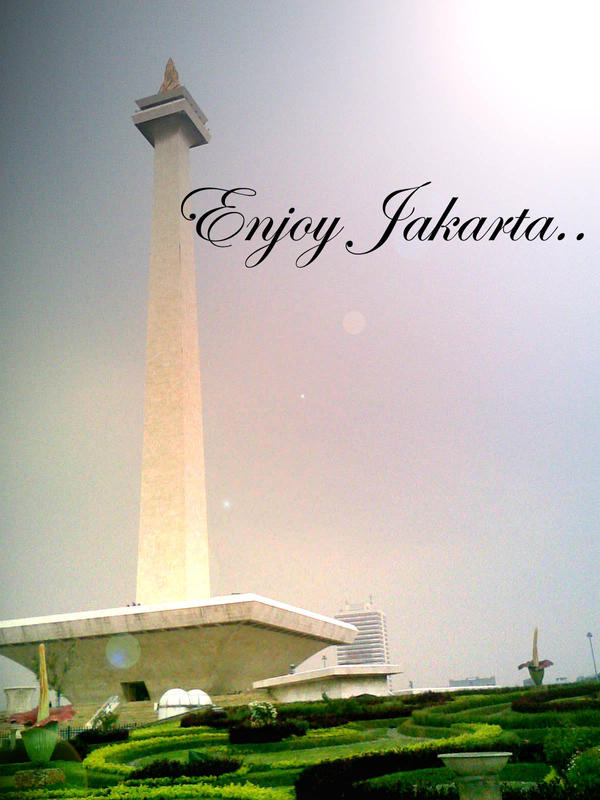
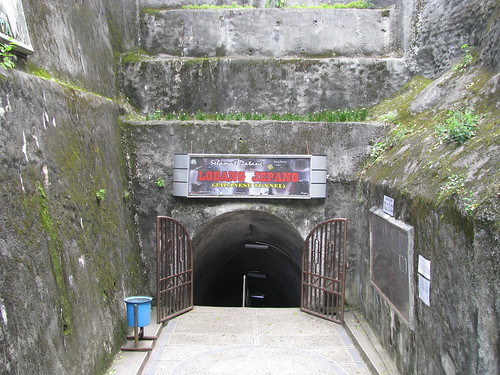


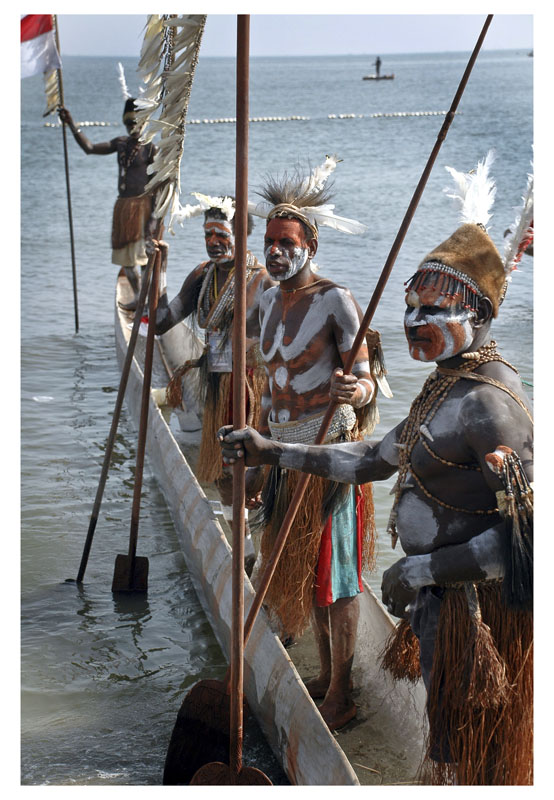





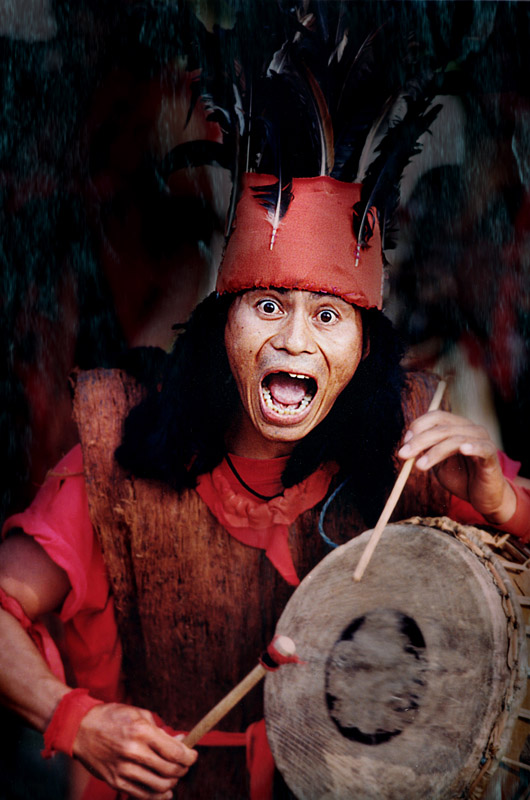

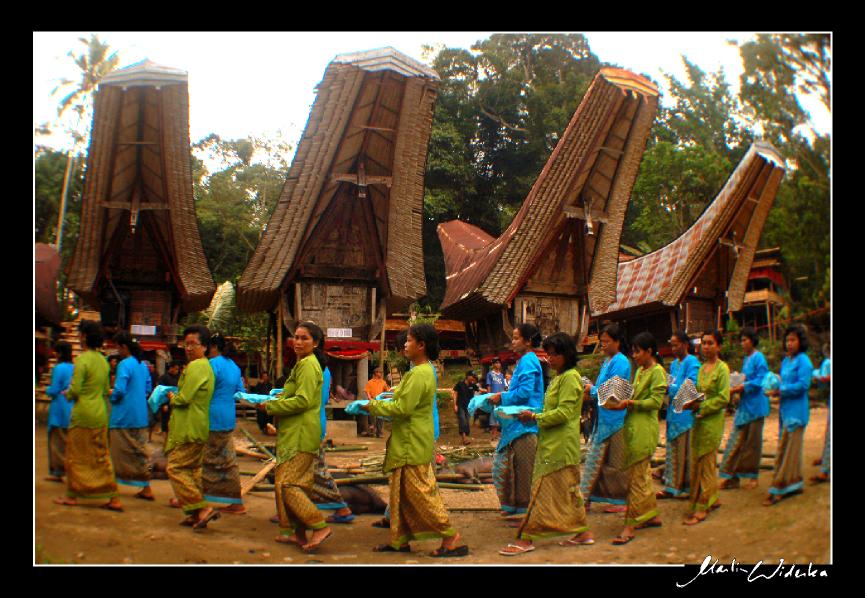

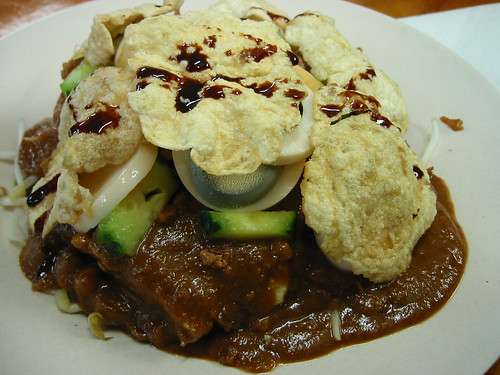



 There was a big fight between mighty warriors having magical power. The peacocks flew up and down flapping their wings to support The Lions – Singa Barong.
There was a big fight between mighty warriors having magical power. The peacocks flew up and down flapping their wings to support The Lions – Singa Barong.  He must have a very strong set of teeth and neck to move around the mask Dadak Merak. On top of this, he has also to carry a lady representing Princess Ragil Kuning. Or sometimes, he has to demonstrate his skill and strength by carrying another mask dancer on top of him, and still he could dance with vigorous and fantastic movements.
He must have a very strong set of teeth and neck to move around the mask Dadak Merak. On top of this, he has also to carry a lady representing Princess Ragil Kuning. Or sometimes, he has to demonstrate his skill and strength by carrying another mask dancer on top of him, and still he could dance with vigorous and fantastic movements. 





